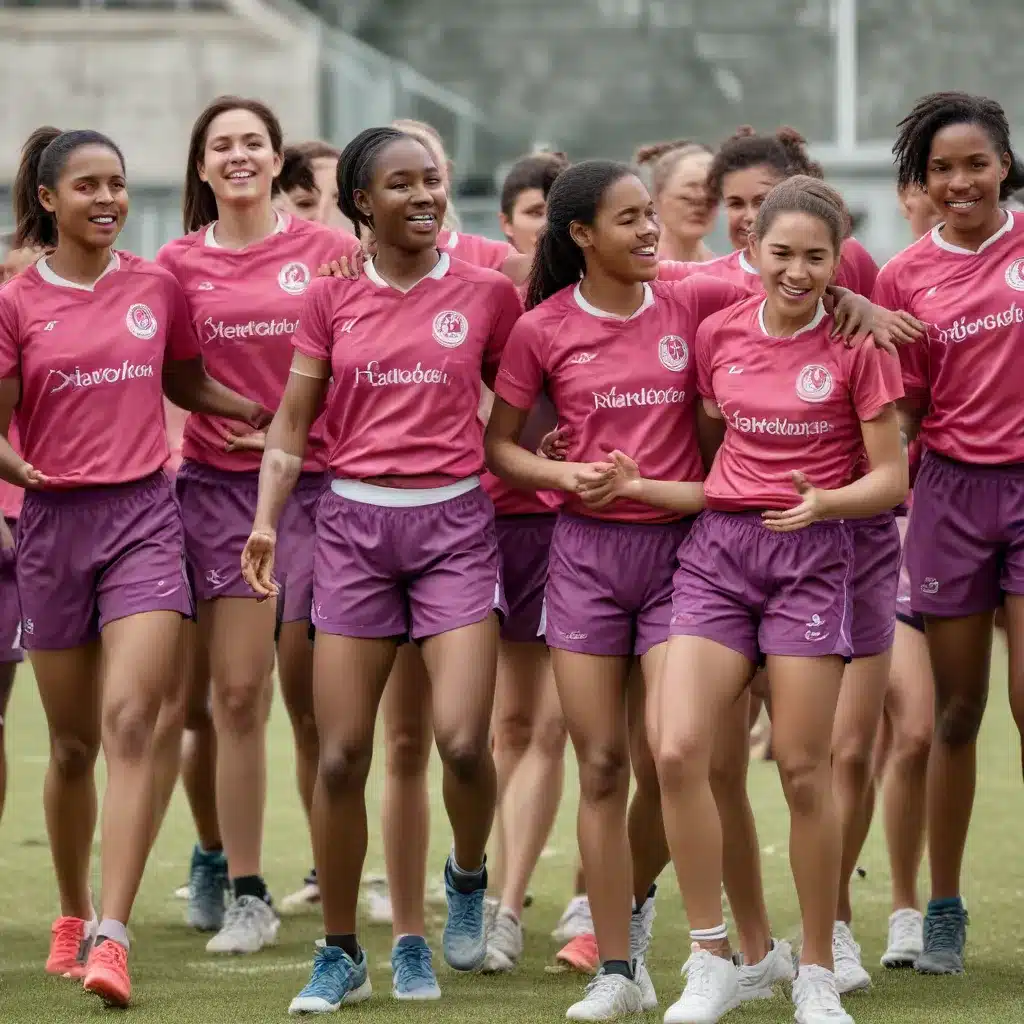
Barriers to Participation
While the benefits of regular physical activity are well-documented, women, girls, and people who menstruate often face unique challenges that can limit their participation in sports and exercise. These barriers arise from a complex interplay of gender-based discrimination, menstrual health concerns, and a lack of inclusive policies and practices.
Gender-Based Discrimination
Entrenched gender norms and stereotypes can contribute to the marginalization of women and girls in the sports arena. From a young age, many are discouraged from participating in certain “masculine” activities, with the assumption that they lack the physical capabilities or interest. This bias extends into adolescence, where girls report feeling embarrassed or self-conscious about their bodies and abilities, leading to a gradual disengagement from physical pursuits.
Menstrual Health Challenges
The menstrual cycle can present significant barriers to participation, with many women and girls experiencing debilitating symptoms like pain, fatigue, and heavy bleeding. Inadequate education, stigma, and a lack of accommodations around menstrual health issues can further compound the problem. For example, a recent study found that 23% of adolescent girls in the UK feel embarrassed to participate in physical activity during their periods, citing concerns about leakage and discomfort.
Lack of Inclusive Policies
Sports environments often fail to cater to the unique needs of menstruating individuals. Restrictive uniform policies, insufficient access to menstrual products, and a general lack of understanding from coaches and peers can all contribute to a sense of exclusion. Additionally, transgender and non-binary athletes may face additional challenges related to menstruation, such as the use of appropriate facilities and the availability of inclusive products.
Improving Access and Opportunities
To foster greater participation and engagement in sports and physical activity, a multifaceted approach is required. This involves creating inclusive programs, empowering athletes through education and advocacy, and driving systemic change.
Inclusive Sports Programs
Designing sports programs that cater to the needs of women, girls, and people who menstruate is crucial. This may include offering a range of activities, providing flexible and comfortable uniforms, ensuring access to menstrual products, and training coaches on how to support participants during their menstrual cycles. Collaborating with community organizations and menstrual health experts can help to ensure these programs are tailored to the unique experiences and preferences of the target population.
Menstrual Health Education
Addressing the knowledge gap around menstrual health is essential. Comprehensive education programs in schools and sports settings can empower participants to understand their bodies, manage menstrual symptoms, and feel confident in their ability to engage in physical activity. This can include information on the physiological aspects of the menstrual cycle, as well as practical strategies for managing discomfort and hygiene during exercise.
Athlete Advocacy and Empowerment
Elevating the voices and experiences of women, girls, and people who menstruate in sports can drive positive change. Initiatives that foster athlete leadership, mentorship, and advocacy can help to challenge gender stereotypes, destigmatize menstruation, and inspire others to pursue their athletic aspirations. By sharing their stories and advocating for inclusive policies, these individuals can become powerful agents of change within their communities.
Cultural Shifts and Societal Change
Addressing the barriers to participation in sports and physical activity requires a broader cultural shift, one that challenges ingrained gender norms and normalizes conversations around menstrual health.
Challenging Gender Norms
Dismantling the perception that certain sports or physical activities are inherently “masculine” or “feminine” is crucial. This can involve showcasing diverse role models, challenging media portrayals, and fostering an environment where all individuals are encouraged to explore and excel in a wide range of physical pursuits.
Destigmatizing Menstruation
The persistent stigma surrounding menstruation must be addressed. By normalizing open discussions about the menstrual cycle and its impact on daily life, including physical activity, we can create a more inclusive and supportive environment for those who menstruate. This can involve public awareness campaigns, educational initiatives, and the incorporation of menstrual health topics into the curriculum.
Elevating Underrepresented Voices
Ensuring that the experiences and perspectives of women, girls, and people who menstruate are heard and valued is crucial. This includes amplifying the voices of those from diverse backgrounds, including those with intersecting marginalized identities, to ensure that the unique challenges and needs of all individuals are addressed.
Sustainable Solutions and Partnerships
Achieving long-term, sustainable change requires collaborative efforts and a commitment to ongoing support and resource allocation.
Collaborative Initiatives
Partnerships between sports organizations, educational institutions, healthcare providers, and community groups can help to develop and implement comprehensive solutions. By pooling resources, expertise, and community insights, these collaborations can create holistic programs that address the multifaceted barriers to participation.
Funding and Resource Allocation
Adequate and consistent funding is necessary to support the development and maintenance of inclusive sports programs, menstrual health education, and athlete advocacy initiatives. Governments, philanthropic organizations, and corporate sponsors can all play a role in ensuring the necessary resources are available to drive meaningful change.
Policy and Regulatory Changes
Advocacy for policy and regulatory changes can help to enshrine the principles of inclusivity and equity in sports and physical activity. This may include the implementation of guidelines for menstrual-friendly sports environments, the incorporation of menstrual health education into school curricula, and the enforcement of anti-discrimination policies to protect the rights of all participants.
By addressing the multifaceted barriers to participation, empowering women, girls, and people who menstruate, and fostering a more inclusive and supportive sports culture, we can unlock the transformative potential of physical activity for all. Through collaborative efforts and a commitment to sustainable solutions, we can create a world where everyone has the opportunity to thrive in the sports and activities they love.


